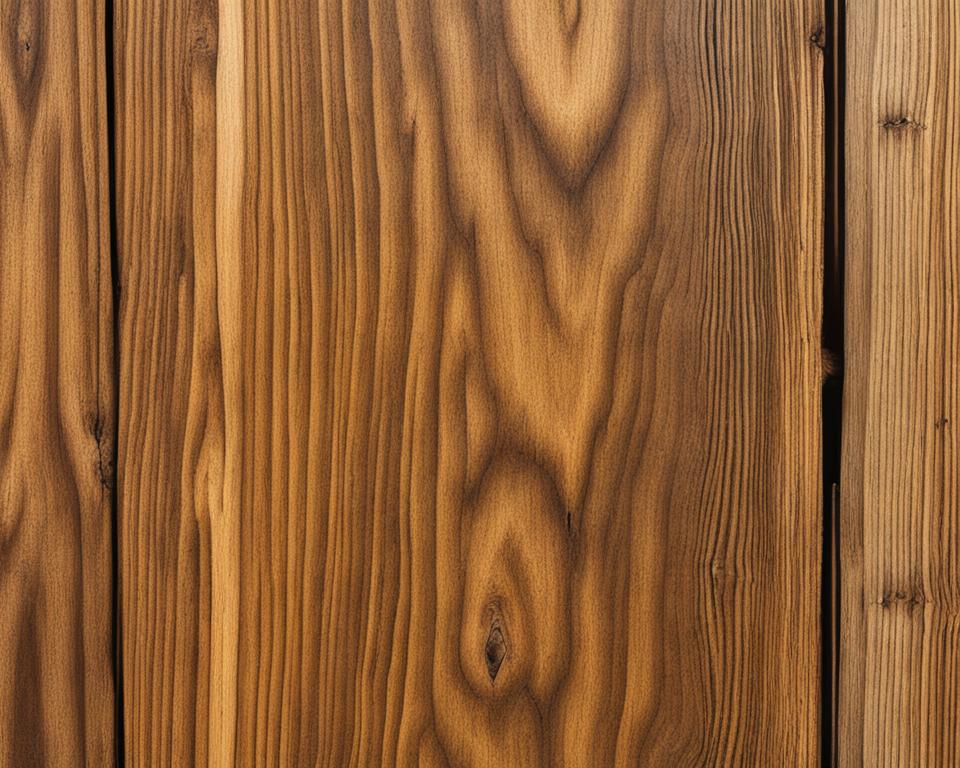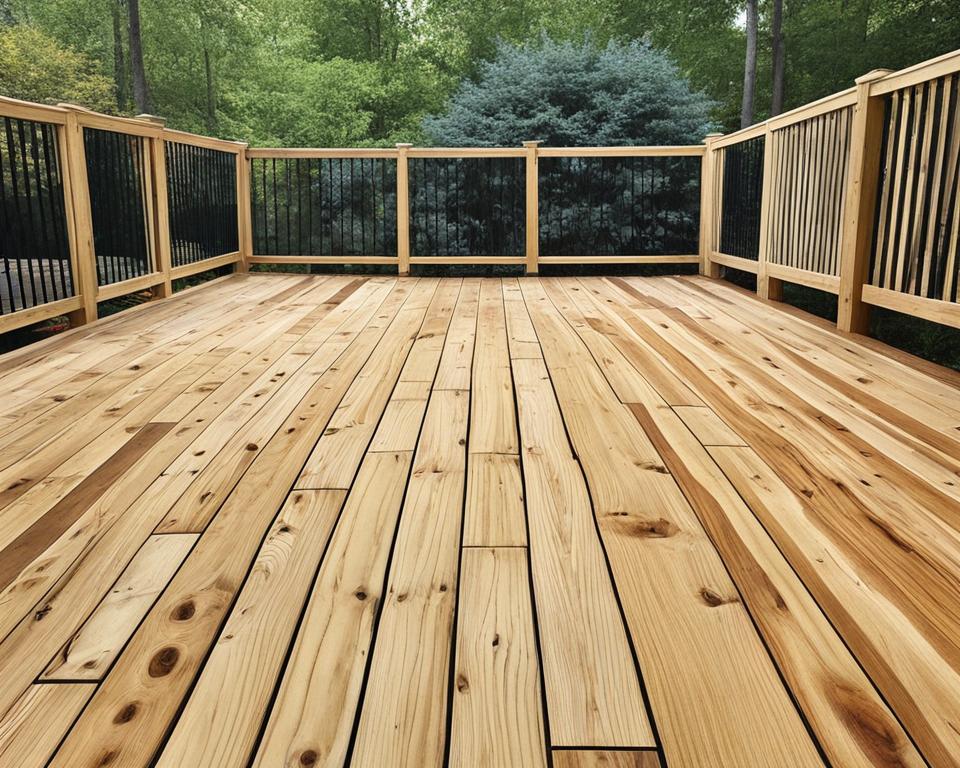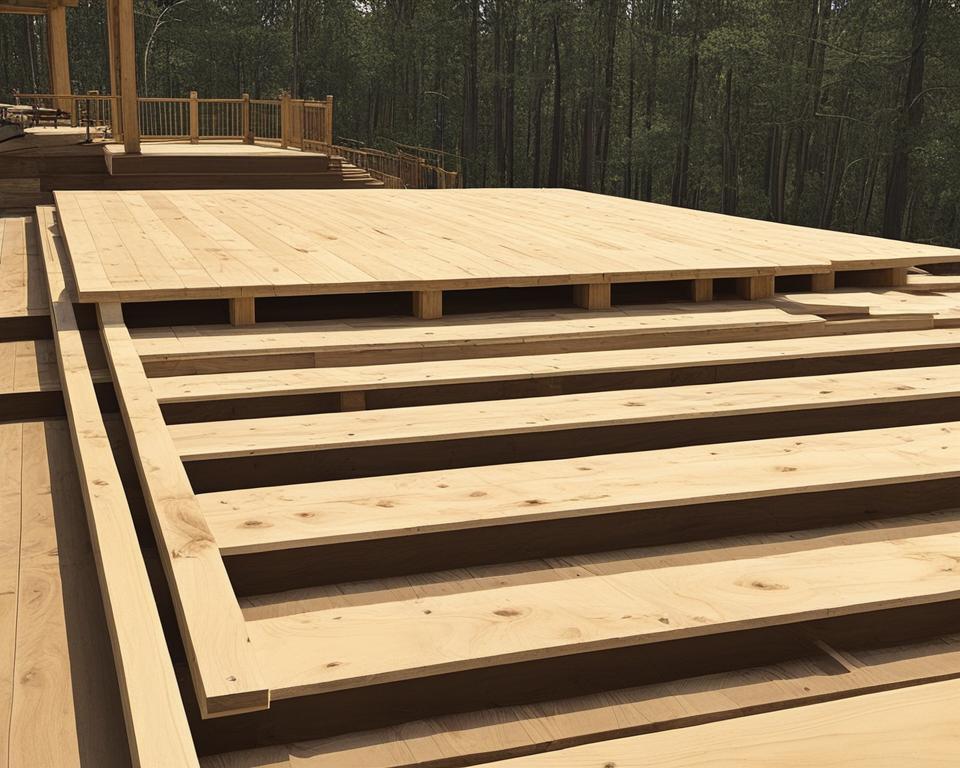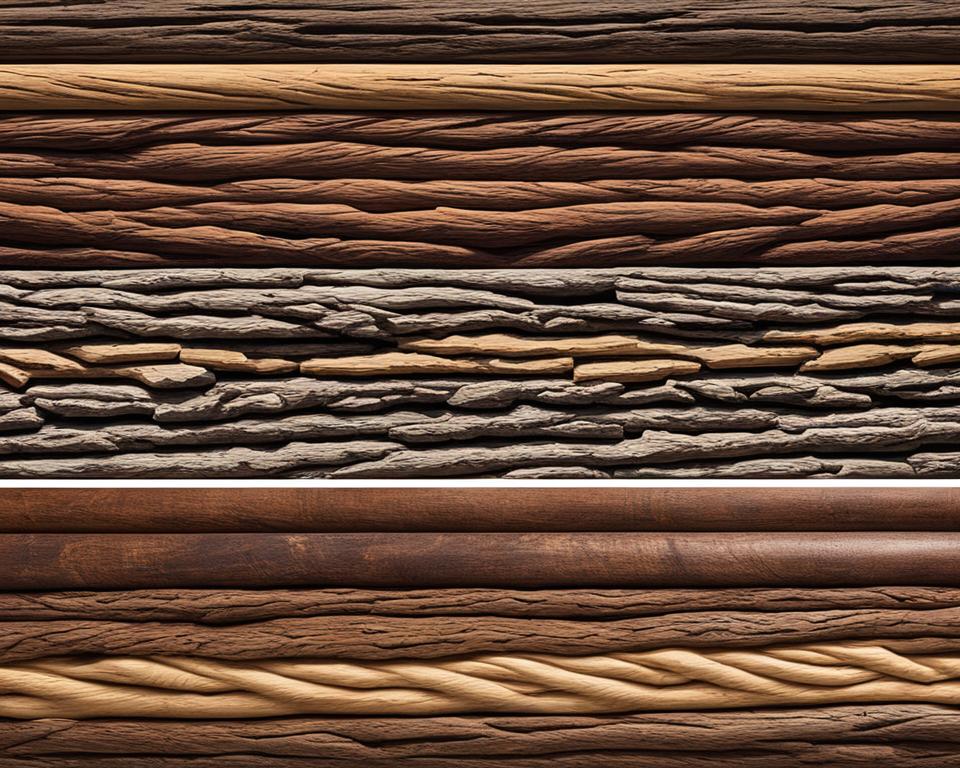When it comes to outdoor construction, pressure-treated lumber has become a popular choice due to its durability and longevity. However, not all pressure-treated lumber is the same. There are different grades available, with #1 and #2 being the most commonly used. So, how do these two grades differ, and how do you choose between them?
In this article, we will explore the key differences between #1 and #2 pressure treated lumber, helping you make an informed decision for your next project. Whether you’re building a deck, a fence, or any other outdoor structure, understanding these differences is crucial in ensuring the success and longevity of your project.
Key Takeaways:
- Pressure-treated lumber has different grades, with #1 and #2 being the most commonly used.
- #1 pressure treated lumber is known for its high quality, strength, and appearance.
- #2 pressure treated lumber is a cost-effective option for structural components.
- Consider factors such as intended use, desired appearance, budget, and local building codes when choosing between #1 and #2 pressure treated lumber.
- Understanding the differences between these grades is crucial in selecting the right lumber for your specific project.
Understanding the Grading System for Pressure Treated Lumber
Pressure treated lumber is classified into different grades based on its quality and appearance. The grading system may vary among manufacturers, but generally, pressure treated lumber is graded as premium, select, #1, #2, and #3. Each grade has specific characteristics that determine its suitability for different applications.
When it comes to pressure treated lumber grading, it’s important to understand the differences between grades to choose the right one for your specific project. Let’s take a closer look at the distinctions between these grades:
Premium Grade
Premium grade pressure treated lumber is the highest quality grade available. It is carefully selected for its appearance and durability, making it ideal for highly visible areas. This grade typically has fewer knots and defects, providing a more polished look for decks, fences, and other outdoor structures.
Select Grade
Select grade pressure treated lumber also offers good quality and appearance, but it may have slightly more knots and imperfections compared to premium grade. It is commonly used for applications where aesthetics are important, such as deck boards, railing systems, and decorative elements.
#1 Grade
#1 grade pressure treated lumber is widely used for structural components such as deck joists, beams, and posts. It provides reliable strength and durability while maintaining a balance between cost and quality. This grade may have more knots and defects compared to premium and select grades but still meets the necessary standards for structural integrity.
#2 Grade
#2 grade pressure treated lumber is a cost-effective option for structural applications where appearance is less critical. It may have more knots, splits, and other imperfections, but still offers adequate strength and protection against moisture and insects. This grade is commonly used for deck boards, fence panels, and other non-visible components.
#3 Grade
#3 grade pressure treated lumber is typically used for construction projects where strength and appearance are not significant factors. It may have a higher number of knots, splits, and other defects compared to other grades. This grade is suitable for applications where functionality outweighs aesthetics, such as temporary structures or projects with a limited lifespan.
Understanding the grading system for pressure treated lumber allows you to make informed decisions when selecting the right grade for your specific project. Consider factors such as appearance, strength requirements, budget, and local building codes to choose the most suitable grade that will meet your needs.

| Grade | Characteristics | Common Applications |
|---|---|---|
| Premium | Fewer knots and defects | Decks, fences, visible structures |
| Select | Slight knots and imperfections | Deck boards, railing systems, decorative elements |
| #1 | Structurally sound with knots and defects | Deck joists, beams, posts |
| #2 | More knots and imperfections | Deck boards, fence panels, non-visible components |
| #3 | Higher number of knots and defects | Temporary structures, projects with limited lifespan |
Key Attributes of #1 Pressure Treated Lumber
#1 pressure treated lumber is known for its high quality and strength. It offers several advantages that make it a popular choice for various construction projects.
Benefits of Using #1 Pressure Treated Lumber
- Durability: #1 pressure treated lumber is designed to withstand harsh outdoor conditions and has a longer lifespan compared to other wood options. It is resistant to rot, decay, and damage from insects.
- Appearance: This grade of lumber is typically free of significant knots and defects, resulting in a more aesthetically pleasing finish. It provides a smooth surface that is ideal for visible areas such as deck boards, handrails, and fences.
- Strength: #1 pressure treated lumber is stronger and more structurally sound than lower-grade options. It can support heavy loads and is suitable for applications that require a high level of strength and stability.
- Additional Treatments: In some cases, #1 pressure treated lumber may undergo additional treatments such as kiln drying or water sealing. These treatments enhance its performance, making it even more resistant to moisture and prolonging its lifespan.
#1 pressure treated lumber is the go-to choice for projects that prioritize both appearance and durability. Its superior quality and strength make it a reliable option for outdoor construction.
When selecting materials for your next project, keep in mind the benefits and advantages of using #1 pressure treated lumber. Its durability, appealing appearance, strength, and additional treatments make it an excellent choice for applications where quality and longevity are essential.

Real-World Example: A Beautiful and Long-Lasting Deck
John recently built a deck in his backyard and chose to use #1 pressure treated lumber for the deck boards and handrails. He wanted a durable and visually appealing deck that would withstand years of outdoor use.
The #1 pressure treated lumber provided him with the desired qualities. The smooth and knot-free surface of the lumber resulted in a beautifully finished deck. Additionally, the strength and durability of the #1 grade ensured that the deck could support heavy furniture and constant foot traffic without compromising its integrity.
John also appreciated the additional treatments that the #1 pressure treated lumber had undergone. The kiln drying process ensured that the lumber was properly seasoned, reducing the risk of warping or shrinking over time. The water sealing treatment further protected the wood from moisture damage, extending its lifespan.
The end result was a stunning deck that not only enhanced the aesthetics of John’s backyard but also provided a long-lasting outdoor space for relaxation and entertainment.
Exploring the Advantages of #2 Pressure Treated Lumber
#2 pressure treated lumber is a versatile and cost-effective option for various construction projects. It offers several advantages that make it a popular choice among builders and DIY enthusiasts.
- Good strength: Despite having more knots and imperfections compared to #1 lumber, #2 pressure treated lumber still provides reliable strength. It is suitable for structural components such as joists, posts, and fence boards, where strength is crucial.
- Resistance to moisture and insects: #2 pressure treated lumber is treated with preservatives that make it resistant to moisture, rot, and insect damage. This ensures its longevity and durability, making it ideal for outdoor applications.
- Cost-effective: One of the main advantages of #2 pressure treated lumber is its affordability. It offers a budget-friendly alternative without compromising on quality or functionality.
- Versatility: #2 pressure treated lumber can be utilized in a wide range of construction projects. Whether you’re building a deck, fence, or any other outdoor structure, #2 lumber can provide the necessary strength and durability.
Overall, #2 pressure treated lumber is a reliable and practical choice for structural components where appearance is less critical. Its strength, resistance to moisture and insects, cost-effectiveness, and versatility make it a preferred option for many builders.

Comparison of #1 and #2 Pressure Treated Lumber
| Characteristics | #1 Pressure Treated Lumber | #2 Pressure Treated Lumber |
|---|---|---|
| Appearance | Minimal knots and defects; ideal for visible areas | More knots and imperfections; suitable for structural components |
| Strength | High strength and durability | Good strength for structural applications |
| Resistance | Resistance to moisture, rot, and insects | Resistance to moisture, rot, and insects |
| Intended Use | Deck boards, handrails, visible elements | Joists, posts, fence boards, structural components |
| Cost | Higher cost than #2 pressure treated lumber | More cost-effective option |
Conclusion
When it comes to selecting pressure treated lumber, there are several important factors to consider. The intended use of the lumber, the desired appearance, budget constraints, and adherence to local building codes all play a significant role in the decision-making process.
For projects where aesthetics and strength are paramount, #1 pressure treated lumber is the preferred choice. This grade of lumber offers superior visual appeal, as it is typically free of significant knots and defects. Additionally, #1 pressure treated lumber provides enhanced durability, making it suitable for visible areas such as deck boards and handrails.
On the other hand, #2 pressure treated lumber presents a more cost-effective option for structural components. While it may have more knots and imperfections compared to #1 lumber, it still offers good strength and resistance to moisture and insects. It is commonly used for joists, posts, and fence boards where appearance is less critical.
By understanding the distinctions between #1 and #2 pressure treated lumber and carefully considering the specific requirements of your project, you can make an informed choice. Whether you prioritize aesthetics or cost-efficiency, selecting the right grade of pressure treated lumber will ensure a successful construction or renovation project.
FAQ
What is the difference between #1 and #2 pressure treated lumber?
The main differences between #1 and #2 pressure treated lumber are in their appearance, strength, and suitability for different applications. #1 lumber is of higher quality and strength, typically free of significant knots and defects, making it ideal for visible areas and applications that require durability. #2 lumber may have more knots and imperfections but still provides good strength and resistance to moisture and insects, making it a cost-effective option for structural components.
How is pressure treated lumber graded?
Pressure treated lumber is graded based on its quality and appearance. The grading system may vary among manufacturers, but it generally includes premium, select, #1, #2, and #3. Premium and select grades are used for more visible areas, while #1 and #2 grades are commonly used for structural components like deck boards and joists.
What are the advantages of using #1 pressure treated lumber?
#1 pressure treated lumber offers superior aesthetics and strength compared to #2 lumber. It is typically free of significant knots and defects, making it ideal for applications where appearance and durability are important. Additionally, #1 lumber may undergo extra treatments like kiln drying or water sealing to enhance its performance and longevity.
What are the benefits of using #2 pressure treated lumber?
#2 pressure treated lumber is a versatile and cost-effective option for various construction projects. Although it may have more knots and imperfections compared to #1 lumber, #2 still provides good strength and resistance to moisture and insects. It is commonly used for structural components like joists, posts, and fence boards, and it is favored for its affordability and suitability for applications where appearance is less critical.
What factors should I consider when choosing between #1 and #2 pressure treated lumber?
When deciding between #1 and #2 pressure treated lumber, several factors come into play. Consider the intended use, desired appearance, budget, and local building codes. #1 pressure treated lumber is preferred for visible areas due to its superior aesthetics and strength, while #2 pressure treated lumber provides a more cost-effective option for structural components. Assessing these factors will help you make an informed choice.
